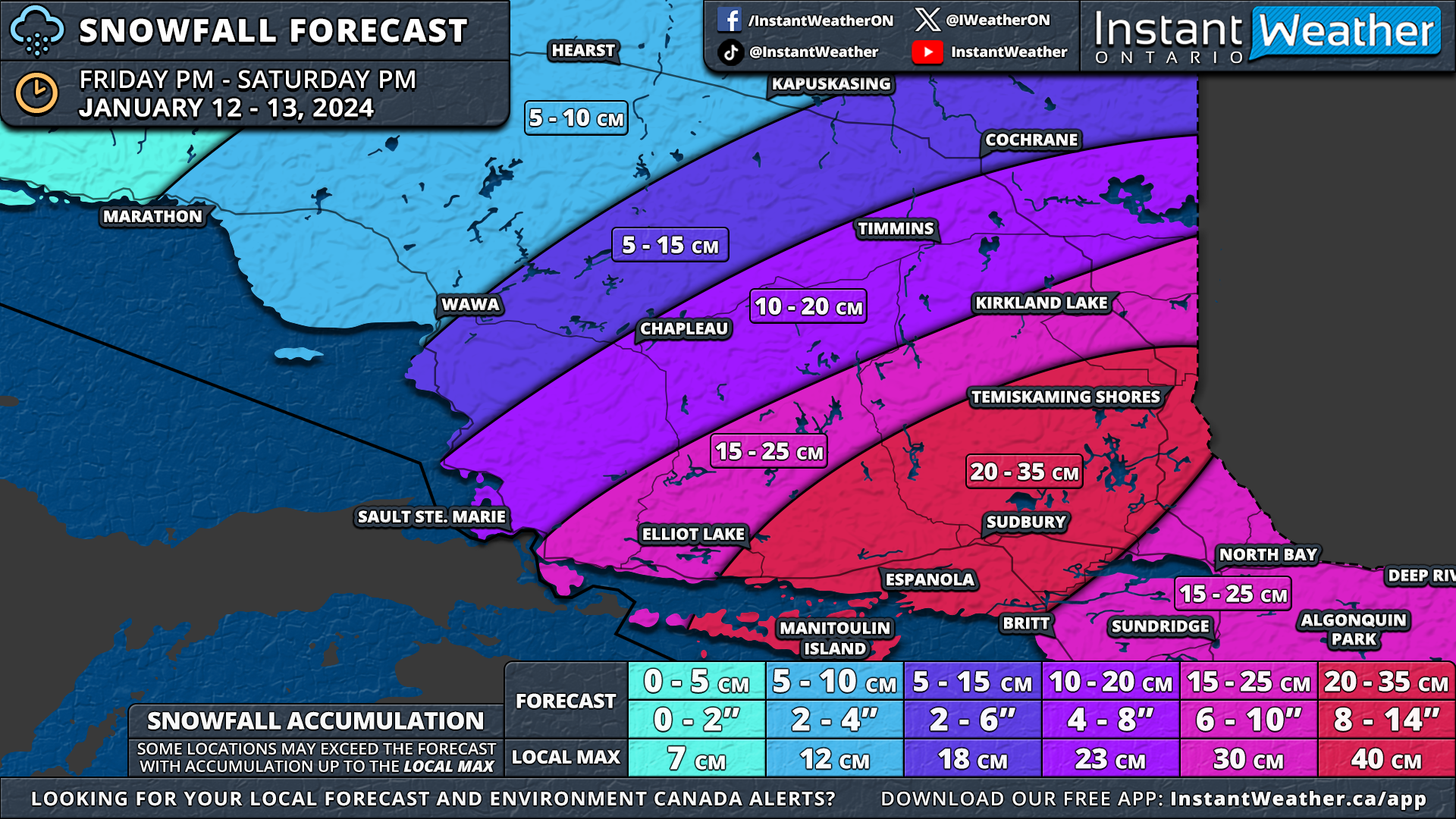Winter Storm Threat Looms for Ontario With Up to 30cm of Snow and 60mm of Rain by Thursday
/The beginning of April in Ontario is setting the stage for a dramatic shift in weather, as a moisture-laden system promises a variety of conditions across the region. This shift includes the potential for flooding rains, with predictions of 40 to 60mm of rain in parts of the Golden Horseshoe.
In addition, areas of Central, Eastern, and Northern Ontario are on track for significant snowfall, with totals ranging from 20 to 35cm in the most affected areas!
As outlined in our previous forecasts, this bout of active weather kicked off with strong wind gusts on Tuesday afternoon, expected to persist into the night.
With the wind gradually subsiding, our attention now shifts to the substantial moisture being pumped into our region from the Gulf of Mexico. Initially, this precipitation will begin as heavy rain, with intense downpours expected overnight and into Wednesday morning across the Greater Toronto Area, extending into Central and Eastern Ontario.
However, by late Wednesday, colder air from the northwest will sweep in, prompting a gradual transition from rain to wet snow by the late afternoon in parts of Central and Eastern Ontario. Northeastern Ontario, already under colder air by the morning, may experience snow for the duration of this event.
The challenge in forecasting this system lies in the temperatures hovering near the freezing point, significantly impacting snow accumulation. Additionally, model predictions vary on the timing of the transition from rain to snow, some suggesting it won't occur until late Wednesday evening, while others indicate it will occur around 2 to 5 PM.
By Wednesday night, most regions, including the Golden Horseshoe, are expected to have transitioned to wet snow, with light to moderate snowfall persisting into Thursday morning and afternoon, concluding by Thursday evening.
Elevation will be a crucial determinant of snowfall totals, with the highest accumulations forecasted southwest of Ottawa in Eastern Ontario's elevated areas. This includes Bancroft, Barry’s Bay, Algonquin Park, and Renfrew, with expected snowfall totals ranging from 20 to 35cm by Thursday's end.
For the Ottawa Valley, including Ottawa, Cornwall, Brockville, and Pembroke, snowfall totals are more uncertain, ranging from 10 to 25cm. This variability will depend on local dynamics and the ability of snow to stick to the ground. There is the potential that some areas will exceed our forecast if the snow can stick more efficiently to the ground.
Further south and westward, snowfall totals are expected to range from 5 to 15cm, including Kingston, Peterborough, Huntsville, and Sundridge. Local areas north of the Greater Toronto Area, particularly along the higher elevations of the Oak Ridges Moraine and Dundalk Highlands, may also see up to 10 to 15cm. This forecast is heavily dependent on temperatures, which may not drop below freezing until Thursday morning, affecting accumulation.
Areas east of Georgian Bay and away from Lake Ontario's shoreline are likely to exceed 5cm but should remain under 10cm. Regions directly along the Lake Ontario shoreline and parts of Southwestern Ontario will experience less than 5cm of snow, as rain will dominate these areas.
In addition to significant snowfall in Central and Eastern Ontario, significant rainfall is anticipated along Lake Ontario's shoreline, including Prince Edward County, Oshawa, Toronto, Mississauga, Burlington, Hamilton, and Grimsby, with potential totals ranging from 40 to 60mm. This rapid accumulation, especially in urban areas prone to flash flooding, poses a substantial flooding risk.
Rainfall totals for the rest of the Golden Horseshoe, extending to the Dundalk Highlands and the Bruce Peninsula, are projected to range from between 30 to 50mm. Further north and east, where more snow is expected to mix in, rainfall totals of 20 to 40mm are likely.
Southwestern Ontario is expected to see lower rainfall totals of 10 to 30mm, with Deep Southwestern Ontario receiving less than 15mm.
In Northern Ontario, heavy snow is the main concern, with the highest totals just north of Sudbury, anticipating 20 to 35cm of snow from Wednesday morning through Thursday afternoon.
For Sudbury and North Bay, snowfall predictions range from 10 to 25cm. Lower amounts are expected towards Georgian Bay due to rain mixing in, while totals will decrease sharply further north and west due to limited moisture.













































